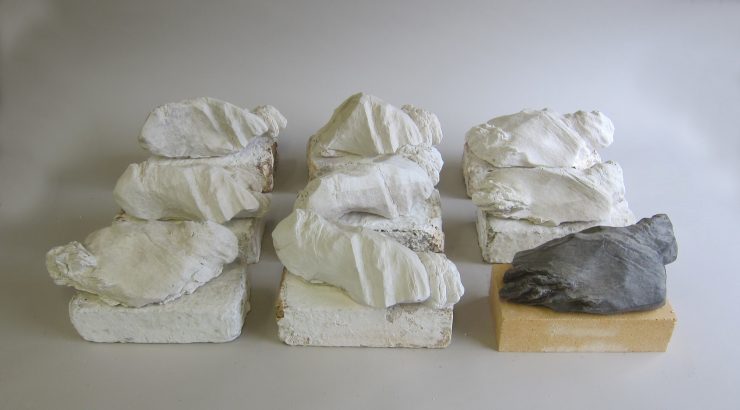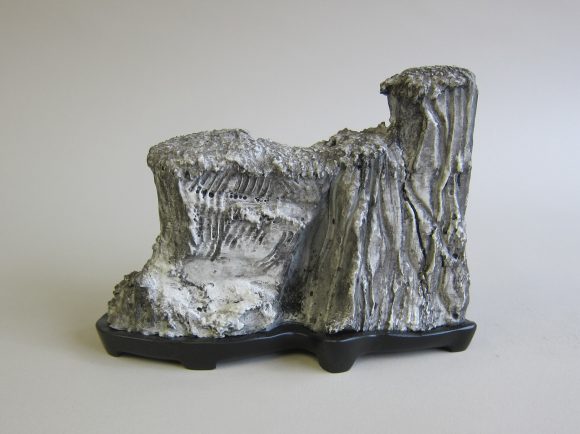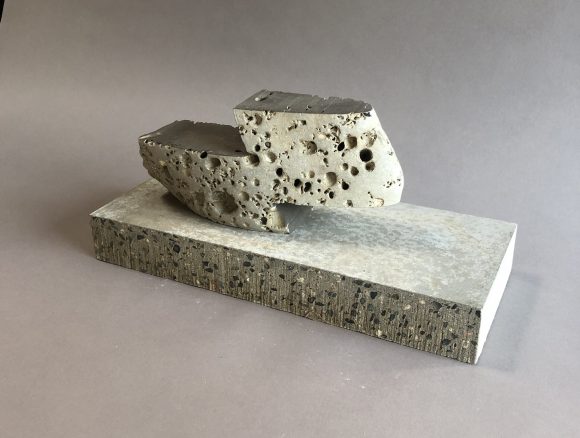Faculty Books: Rocks, the Timeless Bridge Between Man and Nature
July 27, 2020
Have you ever been so captivated by the shape, color, or texture of a rock in nature that you decide to pick it up and keep it? If so, you have been tapping into the ancient practice of “viewing stones.” In art, the term “viewing stones,” is primarily associated with two traditions of stone appreciation—the Chinese Gongshi (or scholar’s rocks), and the Japanese suiseki. Richard Turner (Art Faculty Emeritus) believes that the instinct to collect and display stones is even more widespread and deeply rooted in the human psyche.
Turner’s personal interest in viewing stones began while he was teaching the arts of Asia at Chapman, lecturing on Chinese and Japanese gardens. In addition to the water features, architecture, and rocks found in Chinese gardens, Turner noticed that there were displays of small stones mounted on elaborate bases. These stones, Turner would soon discover, are known as “scholar’s rocks,” because they were collected by 10th century scholars, bureaucrats, artists, and poets due to their unique beauty. “They saw them as a microcosm of the natural world,” Turner explained, as the stones took up various forms such as mountain ranges, clouds, dragons, gods, and human beings.
“Being an artist, I thought: how might I start displaying stones in ways that related to my personal taste, materials, and to the contemporary art of the United States, Europe, China and Japan?” Turner said.
The creation of contemporary stone displays is a project Turner has been working on since the 90’s. Many of these displays can be found on his website, Turner Projects. “Contemporary Viewing Stone Display” is a newly published collaborative work between Turner, Thomas S. Elias (former director of the US National Arboretum), and Paul A. Harris (Loyola Marymount University) that provides an alternative perspective on this ancient practice, and includes an entire section of contemporary viewing stone displays from people all over the world. It is a work accessible to all readers and stone appreciators, says the Viewing Stone Association of North America (VSANA), “From the curious to the connoisseur.”
The book begins with an authoritative history of stone appreciation in China and Japan by Thomas S. Elias, and an essay by Paul A. Harris sets stone appreciation in the context of our conflicted relationship with planet Earth In the two subsequent chapters, Turner applies familiar principles of design to the display of stones and companion objects and introduces readers to the political dimensions of display and the use of common materials and everyday objects in arrangements. The book concludes with the gallery of contemporary displays by collectors from Europe, the United States, and Asia.
“The book is not only a suggested alternative to the tradition of displaying stones, but also a survey of what other people around the world are currently doing with these displays,” said Turner.
Working as a public artist since 1980, Richard Turner has designed pieces for police stations, public parks, transit stations, community centers, and wastewater treatment plants. A Chapman faculty emeritus, Turner taught in the art department for 41 years, directed the Guggenheim Gallery and designed Chapman’s Liberty Plaza—a landscape setting for a section of the Berlin Wall, as well as two sculptures displayed on campus. “Contemporary Viewing Stone Display” can be found on the VSANA website.





